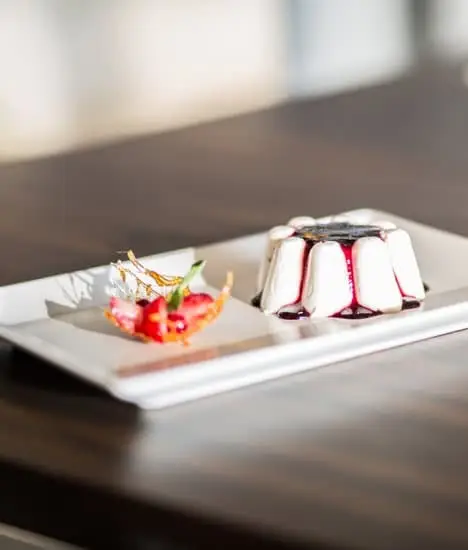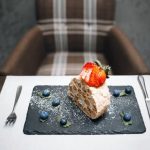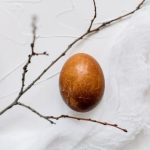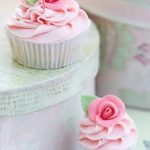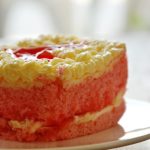Are you ready to add a touch of creativity and flair to your cakes? Whether you’re a baking enthusiast or a seasoned baker, decorating a cake is a fun and rewarding way to showcase your skills and creativity.
But before you dive into the world of cake decoration, you may be wondering: what do you need to decorate a cake? In this article, we’ll explore the essential tools, frostings, edible decorations, piping techniques, kits, advanced techniques, and troubleshooting tips to help you elevate your cake decorating game.
When it comes to cake decoration, having the right tools is key. From offset spatulas to turntables, piping bags to tips, having a well-stocked kitchen will make the process much smoother.
You’ll also want to consider the types of frosting and icings that will give your cake the perfect finish – whether you prefer buttercream for a classic look or fondant for a sleek finish. Edible decorations like sprinkles, edible glitters, and fondant can add that extra touch of pizzazz to your creation.
As you embark on your cake decorating journey, mastering piping techniques will allow you to create intricate designs and patterns with ease. And if you’re looking for convenience and simplicity, investing in a cake decorating kit can streamline the process by providing all the essentials in one package.
Stay tuned as we delve into advanced techniques such as fondant sculpting and airbrushing, as well as troubleshooting tips for common mistakes that may arise during the decorating process. Let’s get ready to unleash our creativity and elevate our cakes to new heights.
Essential Tools for Cake Decorating
Cake decorating is an art that requires the right tools to bring your creative visions to life. To get started on your cake decorating journey, there are some essential tools that you will need to have in your arsenal.
One of the most important tools is a good quality offset spatula, which is used for spreading frosting and smoothing it out on the cake surface. A turntable is also essential for easy access to all sides of the cake while decorating.
Another crucial tool for cake decorating is a piping bag and a set of piping tips. These allow you to create intricate designs, write messages, and add borders to your cakes with precision. A bench scraper is handy for achieving smooth sides on your cake and getting sharp edges. Additionally, a good set of measuring spoons and cups will ensure accurate measurements when preparing frostings and icings.
Furthermore, investing in a quality cake stand or presentation board will elevate your finished creations and make them easier to display. These essential tools are just the beginning of what you need to decorate a cake beautifully. With these basics in hand, you’ll be well-equipped to explore different techniques and advance your skills in cake decoration.
| Tool | Function |
|---|---|
| Offset Spatula | Spread frosting and smooth it out on the cake surface |
| Piping Bag and Tips | Create intricate designs, write messages, and add borders with precision |
| Bench Scraper | Achieve smooth sides on cakes and sharp edges |
Types of Frosting and Icings
When it comes to decorating a cake, choosing the right type of frosting or icing is crucial in achieving the perfect finish. There are various options available, each offering different textures, flavors, and techniques. Here are some of the most common types of frosting and icings used in cake decoration:
- Buttercream: Buttercream is a classic choice for cake decorating due to its smooth texture and versatility. Made with butter, sugar, and flavoring, it can be easily colored and piped onto cakes for a decorative finish.
- Fondant: Fondant is a popular choice for creating a flawless, smooth surface on cakes. This pliable icing can be rolled out and draped over the cake for a polished look. Fondant can also be used to create intricate decorations and designs.
- Ganache: Ganache is a rich mixture of chocolate and cream that creates a glossy finish when poured over cakes. It can be used as both an icing or filling and provides a decadent touch to any dessert.
In addition to these traditional options, there are also unique variations such as cream cheese frosting, royal icing, mirror glaze, and more. Each type of frosting or icing offers its own set of benefits and challenges, so it’s essential to experiment with different options to find the perfect finish for your cake. By understanding the characteristics of each type, you can elevate your cake decorating skills and create stunning confections for any occasion.
Whether you prefer a simple buttercream swirl or an elaborate fondant design, the type of frosting or icing you choose can significantly impact the overall look and taste of your cake. Consider experimenting with different textures, flavors, and techniques to discover what works best for your personal style and skill level. With practice and patience, you can master the art of cake decoration and create delicious works of art that will impress family and friends alike.
Edible Decorations
When it comes to decorating a cake, using edible decorations can take your creation to the next level. Whether you are a beginner or a seasoned baker, adding flair with sprinkles, edible glitters, and fondant can elevate the look of your cake. These elements not only add visual appeal but also provide different textures and flavors to your dessert masterpiece.
To get started with using edible decorations, you will need a few key items. Here is a list of what you will need to decorate a cake with these elements:
- Sprinkles in various shapes, sizes, and colors
- Edible glitter in metallic or pastel shades
- Fondant in different colors for molding and shaping
Sprinkles are always a popular choice for adding color and fun to cakes. They come in a variety of shapes such as stars, hearts, confetti, and more. Edible glitters can give your cake a touch of sparkle and glamour. Fondant is versatile and can be used to create intricate designs like flowers, ribbons, or even 3D figurines. Mixing and matching these edible decorations can result in stunning and unique cakes that showcase your creativity.
When decorating with sprinkles, edible glitters, and fondant, the possibilities are endless. You can use them individually or combine them to create eye-catching designs on your cakes. Experimenting with different techniques like layering sprinkles or shaping fondant accents will help you discover your own personal style in cake decoration. Let your imagination run wild as you explore the world of edible decorations and transform ordinary cakes into works of art.
Piping Techniques
When it comes to decorating a cake, mastering piping techniques is essential for creating beautiful designs and intricate details. Piping involves using a piping bag filled with frosting or icing to create different shapes, patterns, and textures on a cake. To successfully pipe decorations onto a cake, you will need a few key tools and techniques.
Types of Piping Tips
One of the most important aspects of piping techniques is having the right type of piping tips. There are various types of piping tips available, each producing different shapes and effects.
Some common types of piping tips include round tips for outlining and writing, star tips for creating rosettes and stars, leaf tips for making foliage designs, and petal tips for crafting flower petals. Experimenting with different piping tips will allow you to achieve a variety of decorative effects on your cakes.
Using Piping Bags
In addition to selecting the right piping tip, using a piping bag correctly is crucial for successful cake decorating. Piping bags can be made of either disposable or reusable materials, depending on your preference.
Fill the piping bag with frosting or icing, twist the top to secure the contents, then gently squeeze the bag to apply pressure and release the frosting through the tip. Practice controlling the pressure applied to the bag to create smooth lines, intricate details, or textured designs on your cakes.
Techniques for Precision
To master piping techniques, practice is key. Start by practicing basic designs such as dots, lines, swirls, and rosettes on parchment paper before moving on to decorating an actual cake. Gradually increase the difficulty level by trying more complex designs like flower decorations or decorative borders.
Remember that consistency in pressure and movement is essential for achieving clean and professional-looking decorations. With patience and practice, you’ll soon become confident in your ability to create stunning piped decorations on your cakes.
Cake Decorating Kits
One of the key benefits of using a cake decorating kit is that it ensures you have all the necessary tools on hand when you need them. Whether you’re looking to create intricate designs with buttercream frosting or smooth fondant over a cake, these kits often come with a range of tools that cater to different decorating techniques. This eliminates the need to search for individual items at stores, saving time and effort in the process.
In addition to basic tools like icing smoother, couplers, and brushes, some cake decorating kits also include specialty items such as flower nails, impression mats, and letter stencils. These additional accessories can help expand your creativity and allow you to experiment with new decorating techniques. By investing in a quality cake decorating kit, you can enhance your skills as a baker and take your creations to the next level.
| Cake Decorating Kit Tool | Description |
|---|---|
| Piping Bags | Used for adding decorative designs or borders with different frosting colors. |
| Offset Spatula | Helps in spreading icing evenly on cakes and creating smooth surfaces. |
| Turntable | Allows for easy decoration of cakes by rotating them smoothly for even coverage. |
Advanced Techniques
When it comes to taking your cake decorating skills to the next level, exploring advanced techniques like fondant sculpting and airbrushing can truly elevate your creations. Fondant sculpting allows for intricate designs and shapes to be molded out of a pliable sugar paste, adding a unique touch to any cake.
From life-like flowers to adorable figurines, the possibilities with fondant sculpting are endless. To get started with fondant sculpting, you will need a few essential tools such as a rolling pin, modeling tools, and edible food colors.
On the other hand, airbrushing is a technique that uses an airbrush gun to spray food coloring onto the surface of the cake, creating smooth gradients and vibrant designs. This method is great for achieving perfectly blended backgrounds or adding detailed patterns to your cakes.
When delving into airbrushing, make sure to invest in an airbrush kit specifically designed for food use along with quality food coloring in various shades. Practice on paper or spare pieces of fondant before applying the technique directly onto your cakes for precision.
Combining fondant sculpting with airbrushing can result in stunning and visually appealing cake decorations that will leave everyone impressed at your skills. Just remember that practice makes perfect when it comes to mastering these advanced techniques in cake decorating. So gather your tools, experiment with different designs, and let your creativity shine as you explore the world of fondant sculpting and airbrushing in your cake decoration journey.
Troubleshooting Tips
When it comes to cake decorating, there may come a time when you encounter some common mistakes that can put a damper on your creative process. However, with a little know-how and some quick fixes, you can easily rectify these mishaps and continue on your path to making beautifully decorated cakes.
Buttercream Too Runny or Stiff
One of the most frequent issues that decorators face is having buttercream that is either too runny or too stiff. If your buttercream is too runny, try adding more powdered sugar gradually until you reach the desired consistency. On the other hand, if your buttercream is too stiff, try incorporating small amounts of milk or cream until it softens up.
Droopy Cake Layers
Another common problem many decorators face is cake layers that start to droop or slide off one another. To prevent this, make sure that your cake layers are completely cooled before frosting. Additionally, using a crumb coat-a thin layer of frosting applied before the final coat-can help stabilize the layers and prevent any sliding.
Fondant Tears or Cracks
Working with fondant can be tricky, especially when tears or cracks start to appear on its surface. To fix this issue, gently smooth out the tear with clean hands or a fondant smoother. For cracks, using a small brush dipped in water along the seam can help seal it back together seamlessly. Additionally, keeping fondant covered when not in use can prevent it from drying out and cracking.
By being prepared with these troubleshooting tips and techniques for common cake decorating mistakes, you can tackle any challenges that come your way during the creative process. Remember that practice makes perfect in cake decorating, so don’t get discouraged by mishaps along the way; instead, use them as learning opportunities to enhance your skills and create stunning cakes for any occasion.
Conclusion
In conclusion, cake decorating is a delightful and creative process that allows you to turn a simple baked good into a stunning masterpiece. From essential tools like cake pans and offset spatulas to various types of frosting and icings, the key to successful cake decoration lies in having the right supplies at hand. Understanding the basics of piping techniques and exploring edible decorations, such as sprinkles and fondant, can help elevate your cakes from ordinary to extraordinary.
For those looking to simplify the cake decorating process, investing in a cake decorating kit can be a game-changer. These all-in-one sets typically include piping bags, tips, and other tools needed to create beautiful designs with ease. And for those eager to take their skills to the next level, advanced techniques like fondant sculpting and airbrushing offer endless possibilities for creativity.
So, whether you’re a beginner or a seasoned baker, remember that the joy of cake decorating comes from experimenting with different techniques and letting your creativity shine. With the right tools, a dash of imagination, and a sprinkle of patience, you can transform any cake into a work of art that not only looks beautiful but tastes delicious too. So go ahead, unleash your inner artist and see where your cake decorating journey takes you.
Frequently Asked Questions
What Materials Do You Need to Decorate a Cake?
Decorating a cake requires a variety of materials to achieve the desired look. Some essential items include frosting bags, piping tips, offset spatula, bench scraper, cake turntable, and edible decorations like sprinkles or edible flowers.
What Are the Ingredients Used to Decorate Cake?
The ingredients used to decorate cakes depend on the specific design and flavor profile being created. Common ingredients include buttercream or fondant as frosting for covering and decorating the cake. Food coloring gels or powders are used to add color, while different types of candies, chocolates, fruits, and nuts can be used for additional decorations.
What Do You Use to Decorate Cakes With?
Cakes can be decorated with a wide range of tools and techniques based on personal preference and skill level. Some popular ways to decorate cakes include piping buttercream flowers or intricate designs using different tips, creating fondant cutouts or shapes for more elaborate decorations, using edible markers for drawing details directly on the cake surface, or even painting with food coloring for a unique artistic touch.
Ultimately, creativity is key when it comes to decorating cakes.

Welcome to our cake decorating blog! My name is Destiny Flores, and I am the proud owner of a cake decorating business named Cake Karma. Our mission is to provide delicious, beautiful cakes for all occasions. We specialize in creating custom cakes that are tailored specifically to each customer’s individual needs and tastes.

